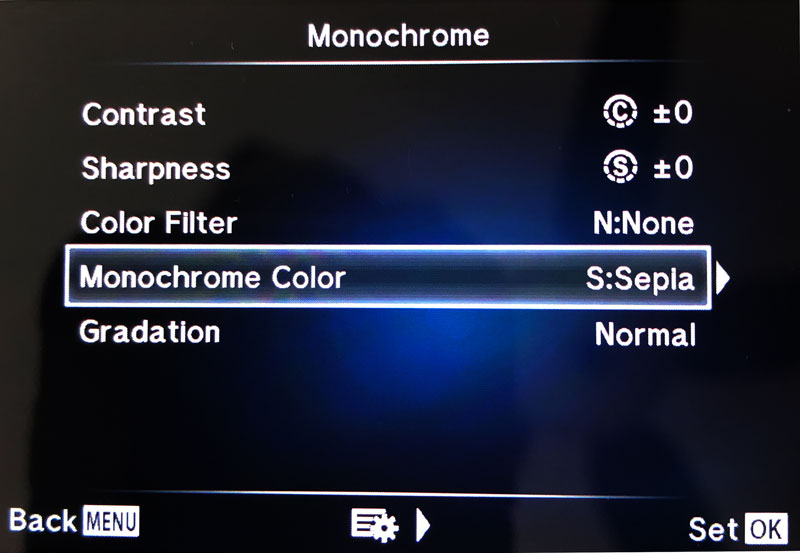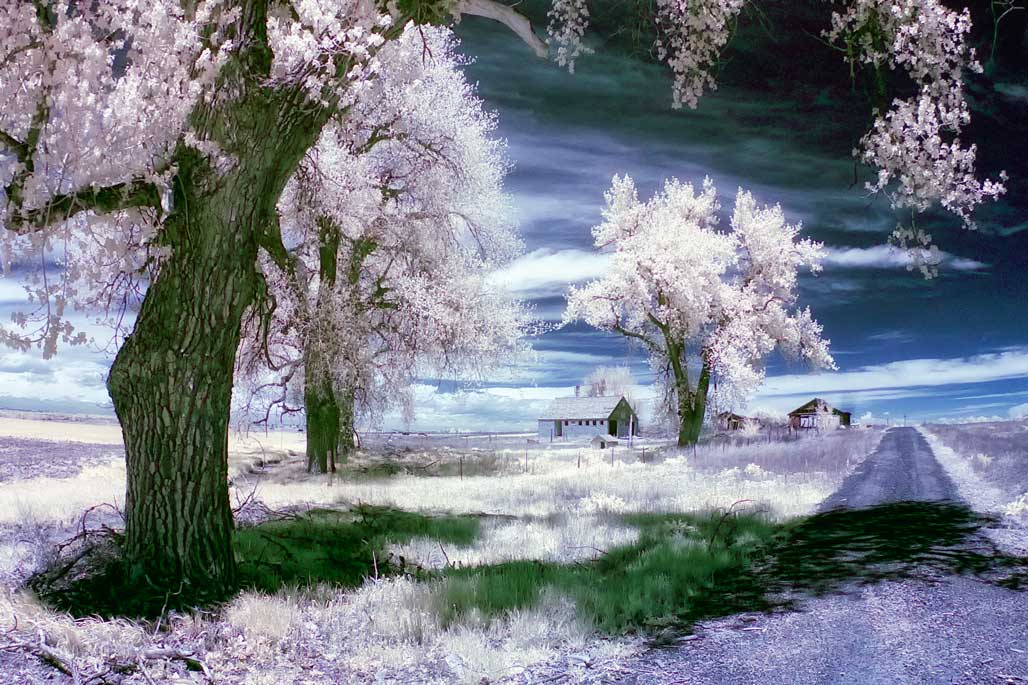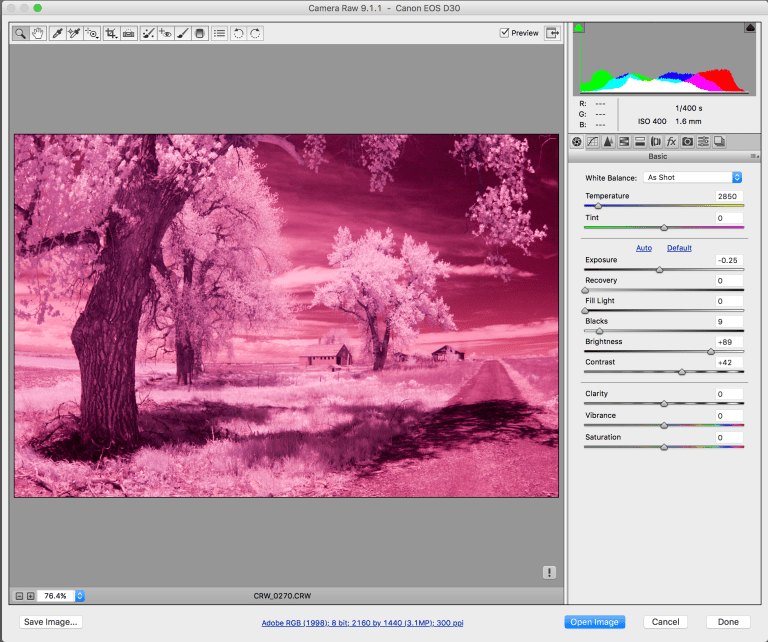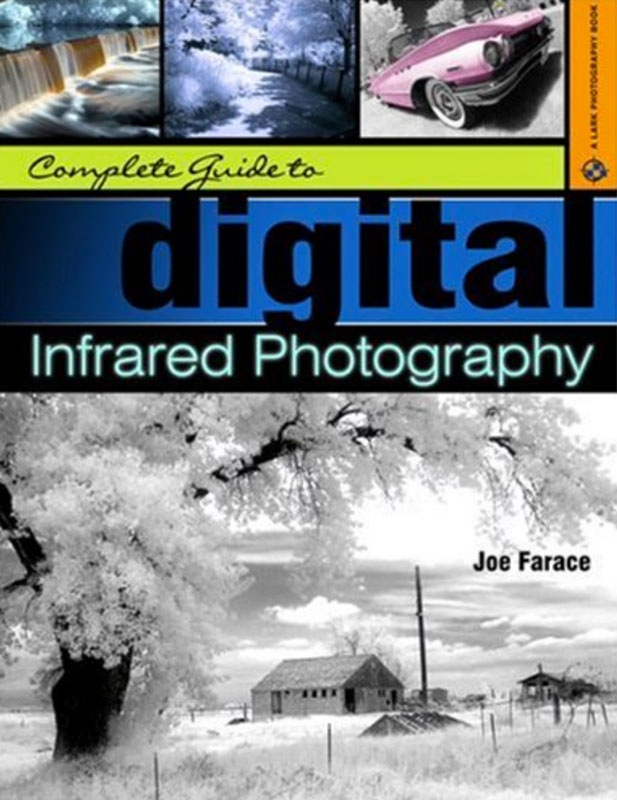Today’s Post by Joe Farace
“To the complaint, ‘There are no people in these photographs,’ I respond, There are always two people: the photographer and the viewer.” ―
 There are lots of ways to add color to your infrared photographs starting with the basics: You can add color to your IR images at the time of capture or later in the digital darkroom.
There are lots of ways to add color to your infrared photographs starting with the basics: You can add color to your IR images at the time of capture or later in the digital darkroom.
Probably the easiest way is to add color is in-camera. Almost all DSLRs and mirrorless cameras that include a built-in black and white mode also feature options for sepia and other kinds of toning, so you can tone your infrared images as you shoot by using the camera’s built-in Monochrome option.
You can also add color in post-production using the toning filters that are found in software and plug-ins such as Pixel Genius’ now free PhotoKit, although there’s more to this, what I consider indispensable plug-in, than toning. If you like to tinker you can create the same effects using Photoshop’s Adjustments Layers for Hue Saturation, Levels, Brightness and Contrast and then applying the Blue Sky channel color swap that I’ve written about before. The actual settings used for this effect are up to you and you can make adjustments, as Emeril says, to “season to taste and then Bam!”
 How I made this shot: The image at left was captured near Brighton, Colorado using a Canon EOS 50D and was converted to IR by LifePixel using their Standard IR (720nm) conversion. I mounted a manual focus Zenitar 16mm f/2.8 lens whose focus was set using the hyperfocal distance for the aperture. The Av mode exposure was 1/400 sec at f/16 and ISO 400. The original RAW file can be seen at right. In this case I used Brad Buskey’s InfraRed Adjustment Action (see below) and made some tweaks using Vivenza before adding the Glamour Glow filter that’s part of Color Efex Pro.
How I made this shot: The image at left was captured near Brighton, Colorado using a Canon EOS 50D and was converted to IR by LifePixel using their Standard IR (720nm) conversion. I mounted a manual focus Zenitar 16mm f/2.8 lens whose focus was set using the hyperfocal distance for the aperture. The Av mode exposure was 1/400 sec at f/16 and ISO 400. The original RAW file can be seen at right. In this case I used Brad Buskey’s InfraRed Adjustment Action (see below) and made some tweaks using Vivenza before adding the Glamour Glow filter that’s part of Color Efex Pro.
 Another alternative for adding color to your infrared images is by using Brad Buskey’s InfraRed Adjustment Action that (keep scrolling on his linked page and you will find it) adds subtle color to a digital infrared files and works best before you’ve converted the file to monochrome. Like all tweaks the more color you start with the more color you end up with.
Another alternative for adding color to your infrared images is by using Brad Buskey’s InfraRed Adjustment Action that (keep scrolling on his linked page and you will find it) adds subtle color to a digital infrared files and works best before you’ve converted the file to monochrome. Like all tweaks the more color you start with the more color you end up with.
It was used to create one of the images (the Allard automobile) on the cover of my Creative Digital Monochrome Effects book. (see below)
 If you enjoyed today’s blog post and would like to buy Joe a cup of Earl Grey tea ($2.50), click here.
If you enjoyed today’s blog post and would like to buy Joe a cup of Earl Grey tea ($2.50), click here.
Copies of my out-of-print book, The Complete Guide to Digital Infrared Photography are available new from Amazon starting $14.40, with used copies starting around four bucks I write this. Creative Digital Monochrome Effects has a chapter on IR photography with new copies are available from Amazon for $9.94 with used copies starting around four bucks, which is a heckuva deal. There are no Kindle version of either book available at this time.